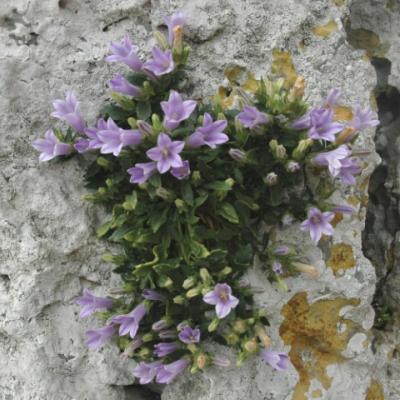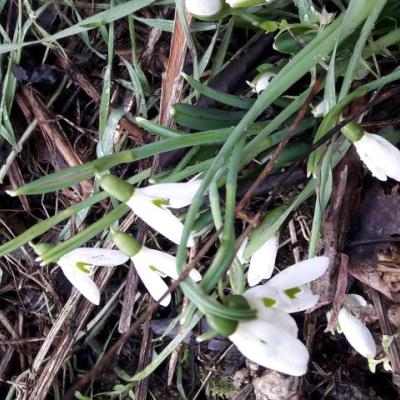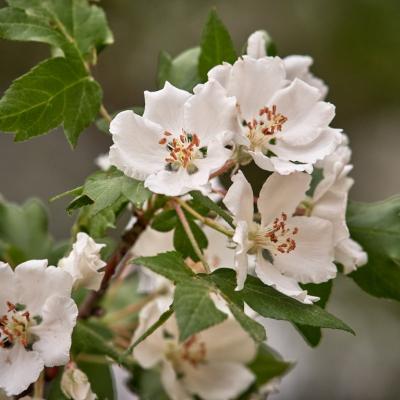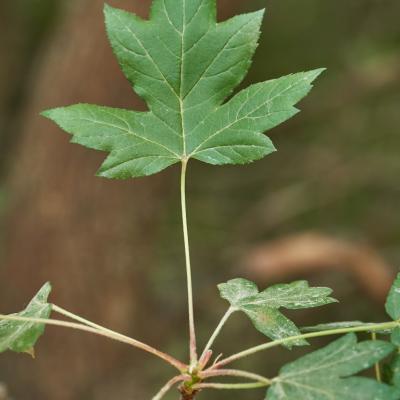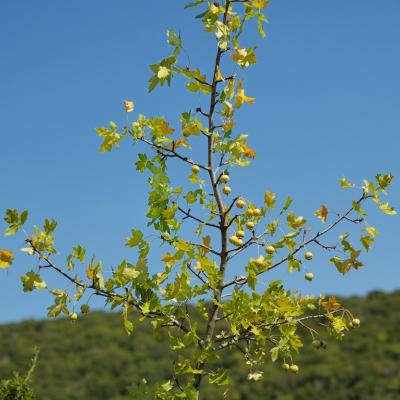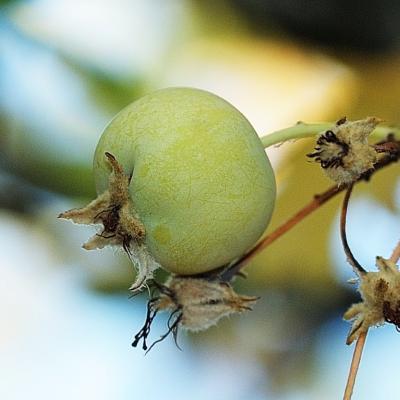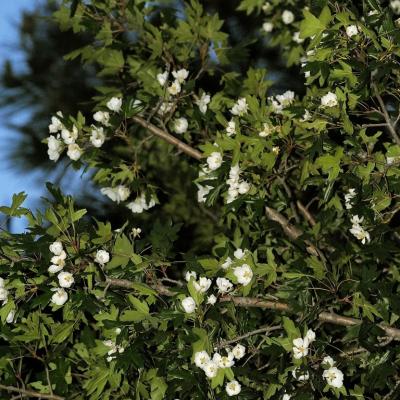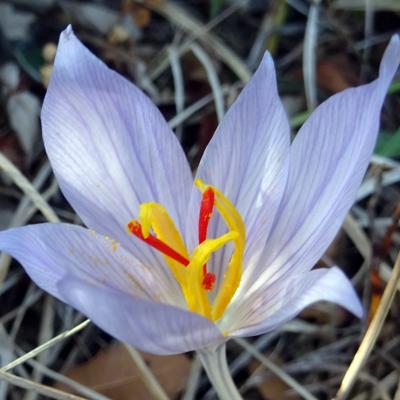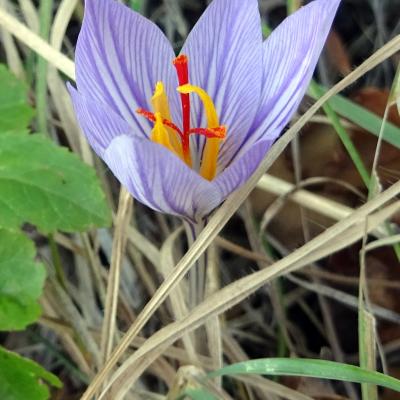Platanthera chlorantha is an orchid with a tall, robust stem, bearing small, slender white-greenish flowers with a characteristically long spur. It appears in forests, shrublands and meadows, flowering from May up to August. Its distribution includes nearly entire Europe, the Middle East, Caucasus, reaching its easternmost borders in Iran. In Greece, it appears in almost all floristic regions, apart from the Cyclades and Crete, from an elevation of 800 m a.s.l. and above.
Campanula merxmuelleri is a biennial or perennial (monocarpic) species with numerous simple stems having flowers and leaves. The species is a local Greek endemic that occurs in Skyros and Psara, in limestone rock crevices and old walls (e.g. castles, churches) at an altitude from 30 to 450 m. The largest subpopulation of the species is distributed at the Mountain Kochylas, Skyros. The main pressures for the species are intense grazing and overcollection. Flowering takes place from April to May.
Aristolochia species are perennial herbs and frutescent climbers with alternate leaves and a very characteristic zygomorphic perianth. Aristolochia cretica is endemic to Crete, Karpathos and Kasos islands. It grows in ravines and rocky slopes with phrygana, semi-shady places by rocks or under bushes, usually on limestone. It flowers from mid-March to end of May.
It blooms in the heart of the winter depending on the weather and the altitude from mid-January to late February or early March. The species is characterized by a winter flowering period, although the specific epithet vernalis refers to spring flowering, apparently as opposed to related Galanthus taxa that bloom in the autumn.
Posidonia oceanica the marine plant that causes unwarranted fear in so many swimmers that say "do not swim above the seaweed," is an Angiosperm monocotyledon and not a seaweed (alga). It is more widely known as Poseidonia, as god Poseidon had chosen it as its favorite plant in antiquity.
Malus trilobata is one of the rarest trees of the Greek flora. It is an east Mediterranean element with constricted and disjunct populations in Israel, Lebanon, Syria and Asia Minor. In Europe, it extends only in the extreme NE Greece, in Evros prefecture, between the villages of Dadia and Makri.
Galanthus ikariae is endemic to the Aegean islands (Ikaria, Naxos, Andros, Skyros). It grows in wet and shady places, usually in ravines and deciduous woodlands. Its flowering period starts in late November, peaking during December. It is distinct among the Greek Galanthus species and is considered related to G. woronowii from the Caucasus.
Centaurea vlachorum Hartvig was described only in 1981 from the mountains Milia and Aftia and it was initially considered an endemic species of Northern Pindos (N. Greece), but it was recently discovered on mountains of Albania, rendering it a Balkan endemic.
Although the genus Centaurea is represented by a 3-digit figure of species in Greece, C. vlachorum stands out quite easily due to a number of morphological characters, such as leaf shape, indumentum and the thickened stem below the capitulum.
Crocus macedonicus Rukšāns was only recently discovered (in 2012) on the southern slopes of Mt Vertiskos in Macedonia. Initially, it was believed that this species has a very limited distribution, only in a few places, but afterwards it was proved to exist on all the southern slopes of Mt Vertiskos, at an altitude of 300-700 m; it is considered that Crocus macedonicus distribution tend to be larger. The species is recorded on limestone slopes with low herbaceous vegetation and its flowering period is in October and November.
Vitex agnus-castus (vitex or chastetree) is a deciduous shrub or a small tree (1-4 m), having a layer of down on its square shaped branches and carrying opposite, composite and palmate leaves. Vitex is blooming from July to September and its flowers grow in distinct inflorescences, in shades of red, blue and rarely of white colour. The fruit is a small, aromatic globular drupe, which contains 3-4 seeds.

